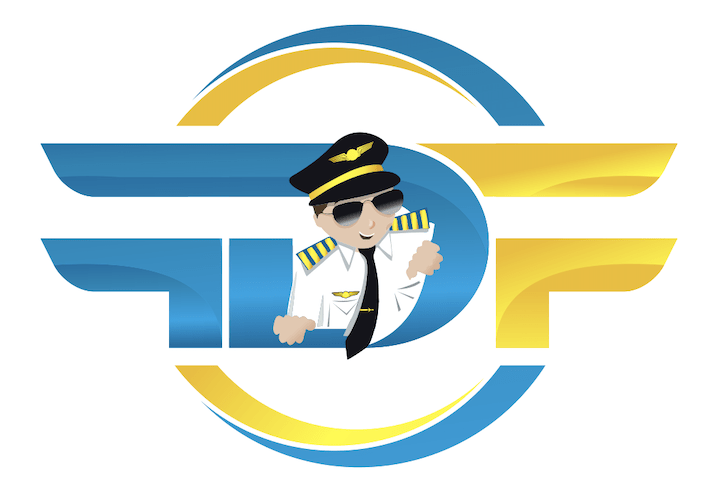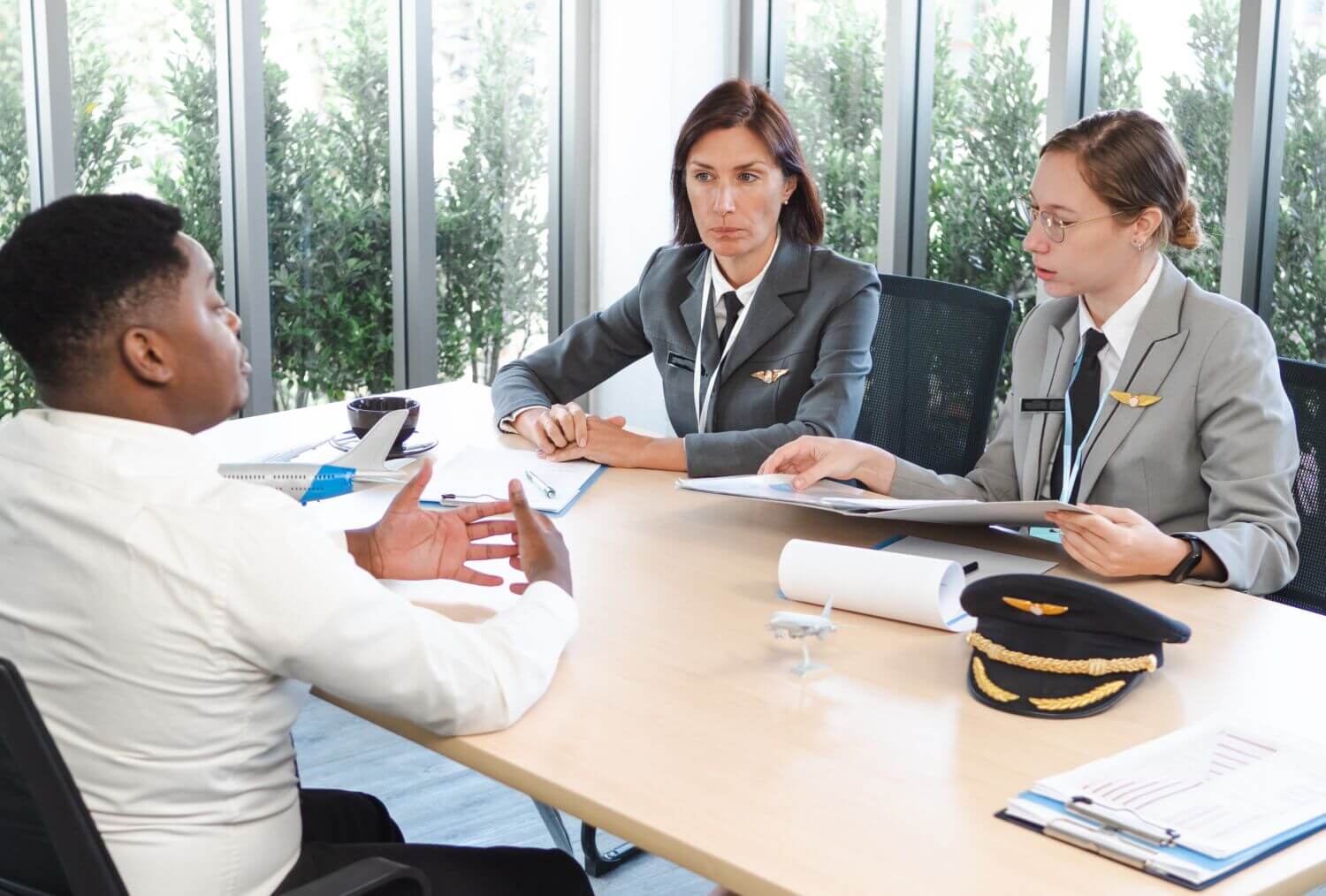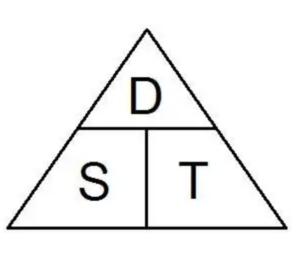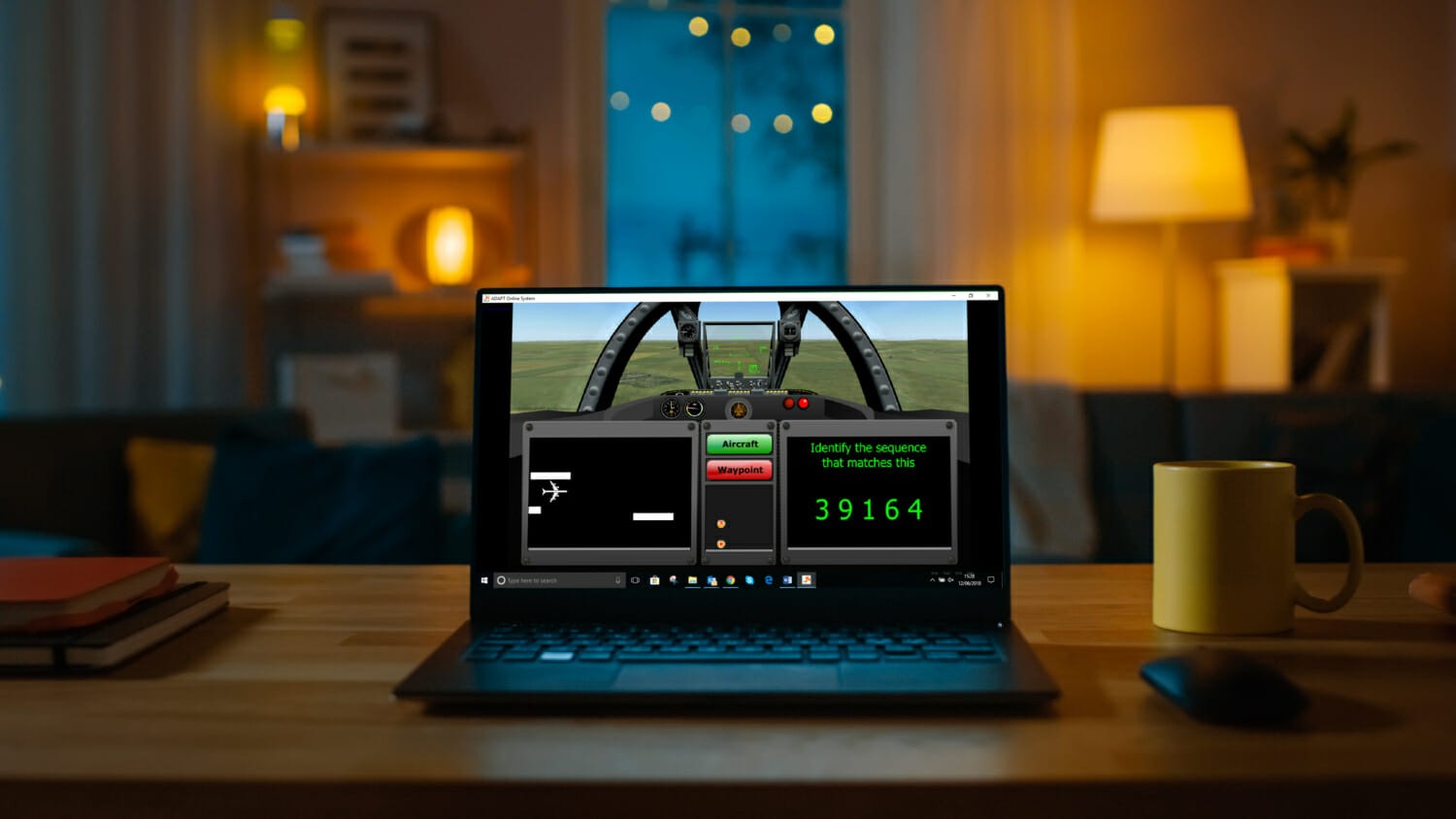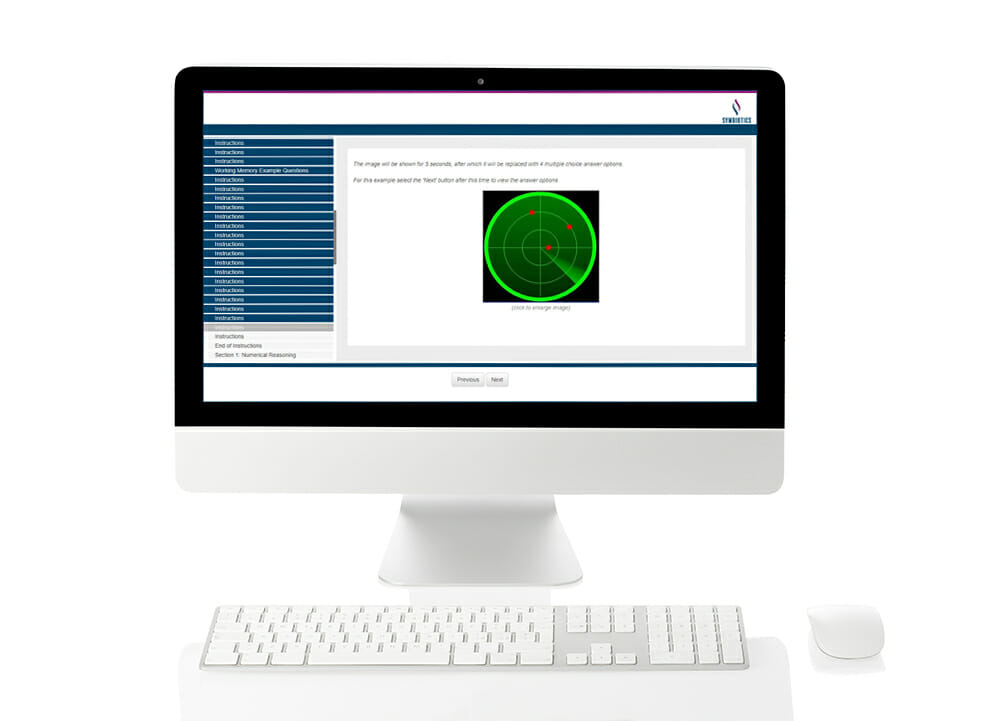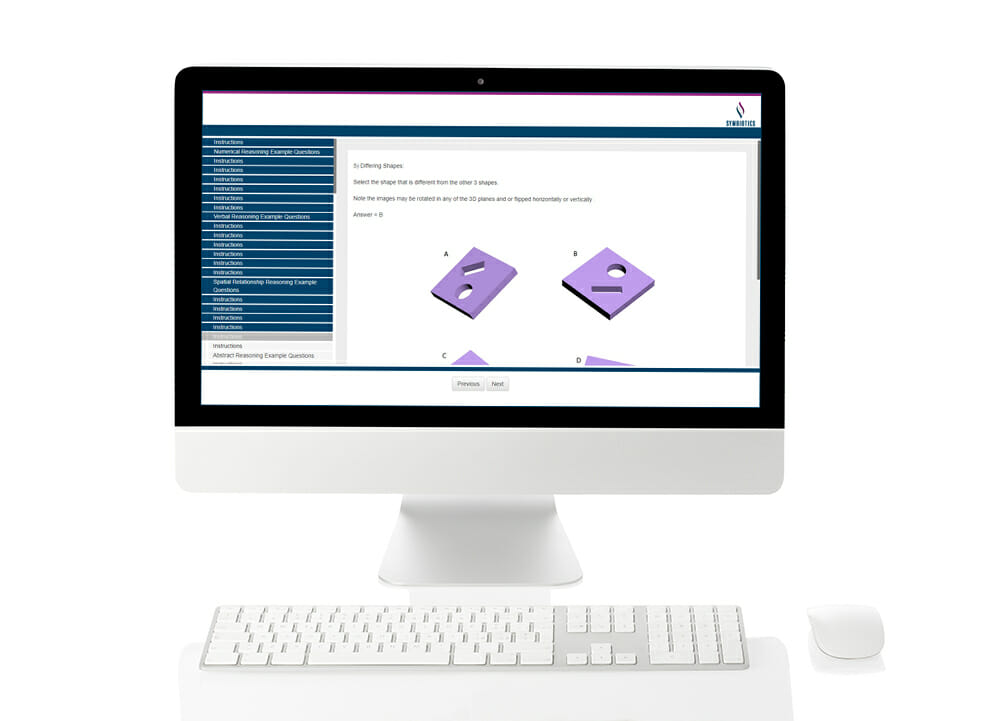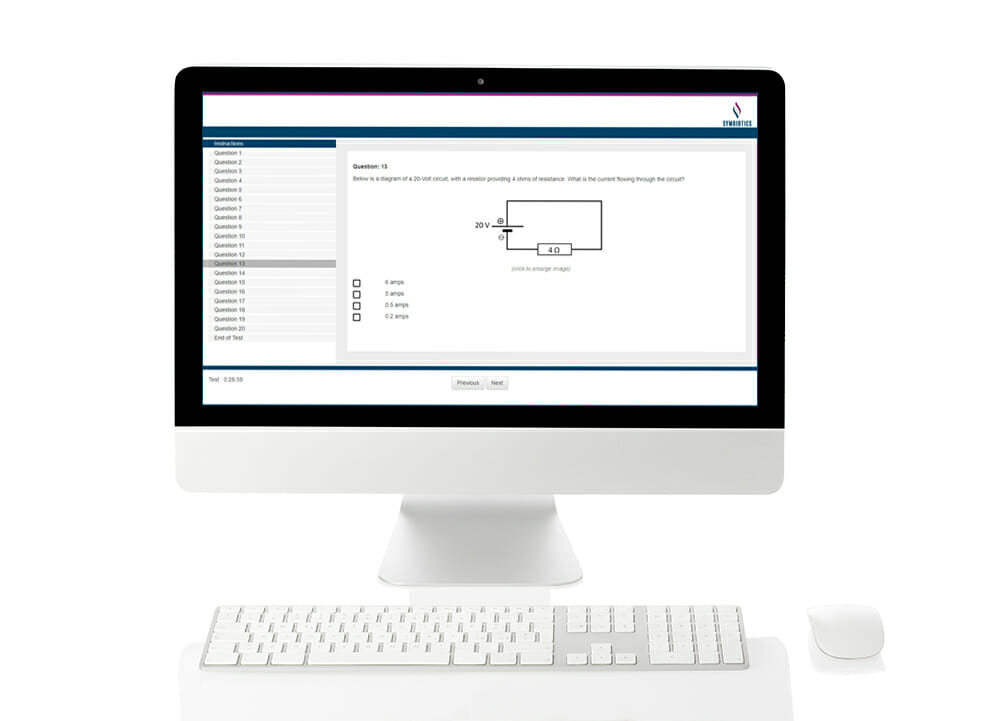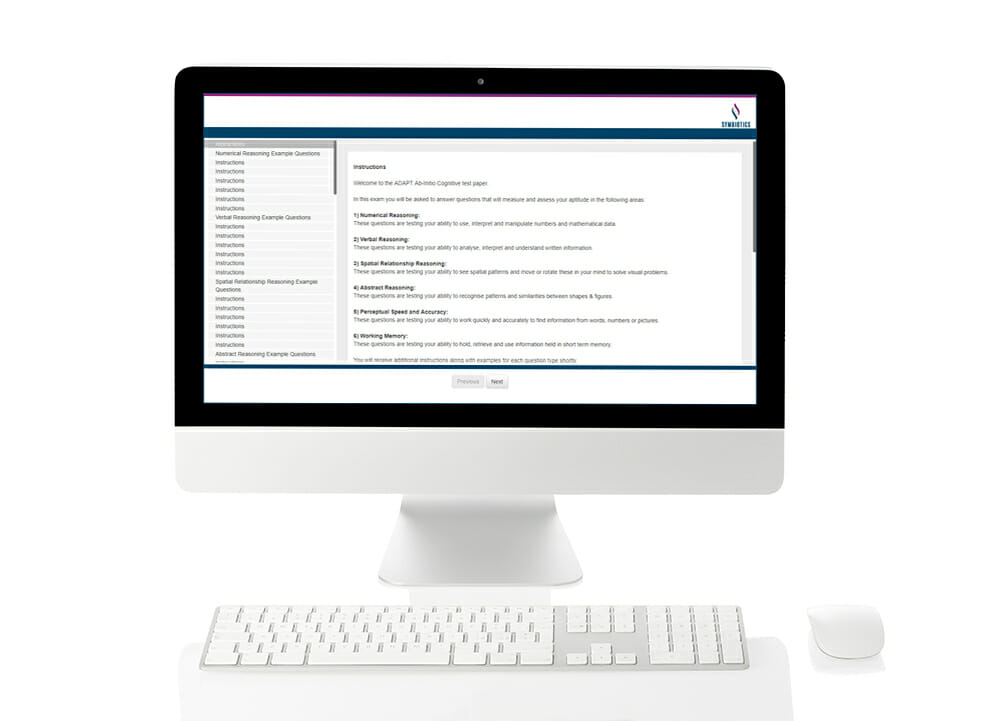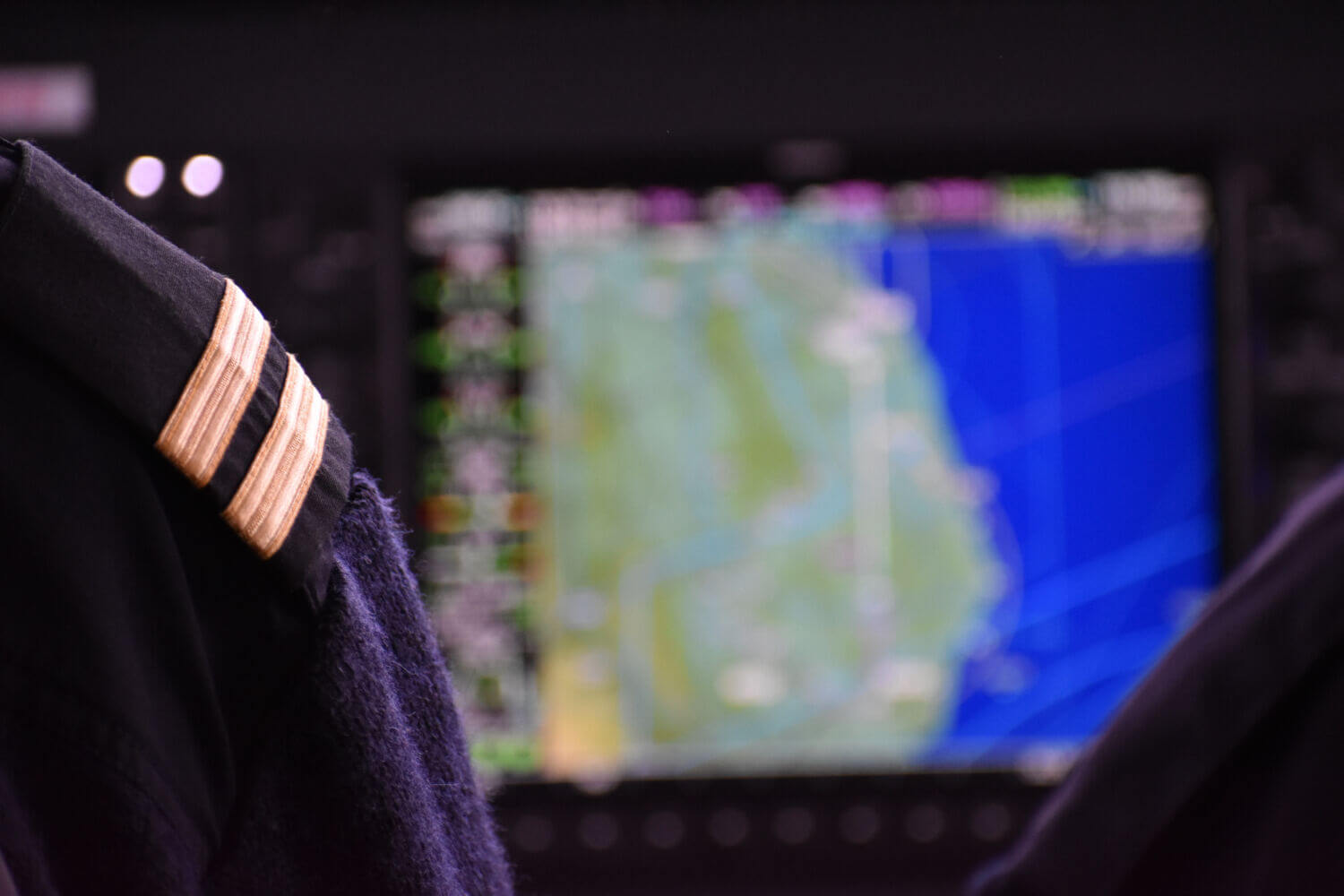Airline Pilot Interview Example Questions
Pilot Interview Example Questions
Join the hundreds of pilots that have downloaded the FlightDeckFriend.com airline interview question database to help prepare for their upcoming pilot interview. The database consists of over 350 example questions (with suggested answers) that are regularly asked at flight crew interviews.
Unlock the key to acing your airline pilot interview with our comprehensive database of interview questions. From situational to technical, we’ve got you covered with the insider knowledge you need to soar high above the competition. Prepare for success and secure your dream job in the skies with our invaluable resource. Our database has been created by pilot recruiters, a technical chief pilot, and management pilots to ensure it is representative of airline interview questions asked across the globe.
It is suitable for the following candidates:
- Direct Entry First Officers
- Low Hour First Officers
- Direct Entry Captains
- Cadet Pilot Programs
- Flight School Entrance Interviews
It is split into the following sections:
- General interview preparation advice and successful interview techniques
- Example competency / motivational questions and answers
- Example aircraft / aviation technical questions and answers
Be Prepared for your Pilot Interview…
With intense competition for each position, which has been exacerbated by the Covid-19 pandemic, it’s vital that you thoroughly prepare for your airline interview in order to place yourself ahead of the competition. Our interview question database is a fantastic tool to help you prepare for your upcoming airline assessment, regardless of your experience level. You can study it in your own time, on any device. We firmly believe that if you can answer the questions in our database, you’ll be thoroughly prepared for your interview!
Over 350 Pilot Interview Questions
Our pilot interview question bank consists of over 175 personal, competency and motivational based example interview questions (typically referred to as HR “give us an example of…” questions) and over 175 technical questions. We update the database on a regular basis based on feedback from pilots attending assessments and new questions that we come across.
Delivery Instructions
The PDF document will be emailed to you shortly after purchase.
Example Pilot Interview Questions
Here’s a small selection of the type of pilot interview questions that are included in our Airline Interview Question Database – both Competency / Motivational based and Technical Questions:
- Tell me about the typical day of a pilot?
- What makes a good first officer?
- What challenges does the company face over the next 10 years?
- Tell us about a time you’ve fallen short at something?
- Explain Dutch Roll?
- How do you calculate the required sweep of the wings?
All of these questions come with appropriate answers.
FDF Airline Interview Question Database – Competency, Motivational and Technical Example Interview Questions with Answers
£39.99 – Instant PDF Download
What is included in our pilot interview question database?
- Reviewed in April 2024
- Emailed to you in PDF format shortly after purchase
- 350+ interview questions and answers
- 101-page document consisting of over 33,500 words
Pilot Application Support Package
We also offer our Airline Interview Question Database as part of a pilot application support package which includes our example Cover Letters and CV templates. Individually, these items are priced at £94.97, however when purchased as a package you receive a 37% discount, costing £59.99. You can find out more about our pilot application support package here.
For any further queries about our pilot interview question database, please contact us via email at: [email protected]
Easy Mental Arithmetic for Pilots
Easy Mental Arithmetic for Pilots
When flying an aircraft, whether it’s a Cessna 152 or an A380, pilots need to be able to do fairly basic but quite quick mental arithmetic. Of course, there are occasions where complete accuracy is critical, but the vast majority of the time, you don’t need to be ‘bang on’, but rather work to rough ‘ballpark’ figures. Whether it be calculating required descent rates or speed/distance/time calculations, general rules of thumb can help you make these calculations quickly and reasonably accurately.
These rules of thumb also work very well when completing pilot numerical reasoning aptitude tests as part of airline pilot assessments. Such tests often require you to work quickly, but with a number of multiple-choice answers, you often just need to reach a rough figure rather than an exact one. Quickly being able to calculate a good estimate in test conditions can prove to be invaluable in passing an airline pilot selection process.
Some of the most important rules of thumb involve using the 3 times table, the 1 in 60 rule and being able to divide or multiply by 10. Let’s have a look at some examples:
Distance Required to Descend for Aircraft Calculations
Most aircraft plan to descend at an angle of approximately 3 degrees. To calculate how much distance an aircraft needs to fly to achieve a given reduction in altitude, based on a 3-degree angle of descent, a basic rule of thumb can be used:
Distance Required to Reduce Altitude = Total Altitude to Lose / 1,000 x 3.
For example, if you are at 40,000ft and you need to be at 10,000ft at 30NM before the airfield, you need to lose a total of 30,000ft. Divide 30,000ft by 1,000 (simply take away the last 3 numbers when dividing by 1,000), which gives you 30 and multiply this by 3 gives you 90. It will therefore take you about 90NM to reduce altitude by 30,000ft. If you need to be at 10,000ft by 30NM before the airfield, then add this to the 90NM which gives you a start of descent point of 120NM.
This assumes still air conditions at a constant speed. Whilst it depends on aircraft types, for commercial aircraft, adding an extra mile for every 10kts of airspeed you need to lose is a good ballpark figure. So, in the above example, if you start the descent at 300kts IAS, and need to be at 200kts IAS by the time you reach 10,000ft, you would add 10NM to the distance required to lose the altitude (so 90NM becomes 100NM).
Having a headwind or tailwind also needs to be factored when calculating the distance required to descend. As a rough guide, add 1 NM to the distance required to descend for every 10kts of tailwind and reduce the distance by 1 NM for every 10kts of headwind.
Descent Rate Required to Achieve a 3 Degree Descent Angle when Flying
So, you’ve calculated the distance required to descend to a given altitude using the above method. Using the above example, you will be descending at a 3-degree angle over 90NM. But if you are descending at 3 degrees, what descent rate do you need to achieve? An easy way to calculate this is using this basic formula.
3 Degree Descent Rate = 5 x Ground Speed
For example, if you are flying at a ground speed of 300kts, multiply 300 by 5 and this tells you that you would need to descend at 1,500fpm to achieve a 3-degree descent profile. Some people prefer to multiply the ground speed by 10 then divide by 2. Clearly your ground speed will change with altitude as the True Airspeed and Head/Tailwind changes so you will need to periodically review your rate of descent throughout the manoeuvre.
Descend to an Altitude within a Fixed Time Period
ATC will sometimes require an aircraft to descend to a given altitude within a specific time period. For example, “FDF123 descend to Flight Level 320 to be level within 4 minutes”. In this type of scenario, you need to calculate how many feet per minute you need to descend in order to achieve this restriction. This can be calculated using the following method:
Feet Per Minute Required = Total Altitude to Lose / Number of Minutes
For example, if flight FDF123 is maintaining FL360 (36,000ft) and has been told to descend to FL320 (32,000ft) within 4 minutes, the total altitude required to lose is 4,000ft. 4,000 divided by 4 is 1,000, so the aircraft needs to descend at 1,000ft per minute to meet the restriction.
In such a scenario, you don’t necessarily need to be exact, sometimes you can simplify and be conservative with your calculations since the request is usually ‘within 4 minutes’ not ‘exactly 4 minutes’. For example, if you are flying at 25,000ft and are told to descent to 17,000ft to be level within 9 minutes, we know the calculation is 8,000 / 9 (which equals 888 fpm). However, we can turn these into round numbers to make the calculations easier, just remember to do it in a conservative way to ensure the restriction can be made. For example, we can hopefully quite quickly work out that if we descended at 1,000 fpm, we would descend 8,000ft in 8 minutes. Yes, we’d be levelling off one minute earlier than the restriction required, but we have achieved ATCs request.
Speed, Distance and Time Calculations for Pilots
We are probably all aware of the relationship between variables from school and have heard of the Speed, Distance & Time triangle. When flying, we should always be aware of our speed so calculating distance and time is more relevant.
There is a ‘magic triangle’ which can help us quickly remember how to calculate speed, distance, and time. You simply cover up the entity you are trying to find and the reveals how to calculate it. For example, if you cover the ‘S’ you can see that the calculation for speed is distance divided by time.
- Speed = Distance / Time
- Distance = Speed x Time
- Time = Distance / Speed
Easy Speed / Distance / Time Calculations for Pilots
Speed is the distance you travel over a specific time period, so they are intrinsically related. It’s worth understanding some rules of thumb which can help you make quick calculations about distance and time calculations.
- 30kts = 0.5NM per minute
- 60kts = 1NM per minute
- 120kts = 2NM per minute
- 180kts = 3NM per minute
- 240kts = 4NM per minute
- 300kts = 5NM per minute
- 480kts = 8NM per minute
- 540kts = 9NM per minute
- 600kts = 10NM per minute
Remember that there are 60 minutes in an hour. Well therefore, if we divide any speed by 10, this will tell us what distance the aircraft is travelling in 6 minutes at its current speed.
For example, if an aircraft is flying at 150kts, this tells us that it is travelling 15NMs every 6 minutes (150 divided by 10 = 15). Another example is that if the aircraft is travelling at 370kts it is covering 37NM every 6 minutes. You could then halve this number to see how far the aircraft travel in 3 minutes, 1.5 minutes etc.
Put another way, if asked ‘how many miles will you travel in 20 minutes at a speed of 180kts?’. 180 divided by 10 is 18, so 18 miles every 6 minutes. So, if we multiply this number by 3, we know how many miles are covered in 18 minutes (3 x 18 miles = 54NMs). If we cover 18 miles every 6 minutes, we know we cover 9 miles every 3 minutes (it’s then easy to see that it’s actually a mile a minute in this example!). So therefore, we are covering 63 miles every 21 minutes. Knock 3 miles off and we get to 60 NM.
Example Distance to Descend Questions for Pilots
Here’s a few example questions. We’ve got lots more pilot numerical reasoning test example questions over on our dedicated page. The BBC GCSE Bitesize website is also a great resource to help you practice your mental arithmetic.
If an aircraft is flying at an intermediate altitude of 25,000ft and is instructed by ATC to achieve an altitude of 13,000ft by a fix on the arrival, what distance before the fix should the pilots initiate the descent, assuming a planned 3-degree descent profile at a constant speed and still wind?
- A) 40 NM
- B) 38 NM
- C) 36 NM
- D) 28 NM
25,000ft minus 13,000ft = 12,000ft to lose. 12,000 divided by 1000 = 12, multiplied by 3 = 36.
ATC have told you to self-position to a 10NM extended centreline from the landing runway. There are no restrictions other than needing to achieve an altitude of 3,000ft and at a speed of 180kts at the 10NM point. You are currently level at 8,000ft at 250kts and anticipate an average tailwind of 10kts. In order to achieve the restriction, at what point before the 10NM fix should you commence the descent?
- A) 23 NM
- B) 15 NM
- C) 22NM
- D) 16NM
8,000ft – 3,000ft = 5,000ft. 5,000 divided by 1,000 = 5, multiplied by 3 = 15 NM. 250kts – 180kts = 70kts = add on an extra 7NM (1NM per 10kts of airspeed to lose). Add 1NM per knot of tailwind. 15 NM (distance required) + 7 NM (to account for deceleration) + 1 NM (to allow for tailwind) = 23NM.
Example Descent Rate Required Questions
With a 280kts ground speed, what rate of descent do you need to achieve in order to maintain a 3-degree descent angle?
- A) 2,800 fpm
- B) 1,400 fpm
- C) 700 fpm
- D) 2,000 fpm
5 x 280 = 1,400. Or 280 x 10 = 2,800 / 10 = 1,400.
With a 420kts ground speed, what rate of descent do you need to achieve in order to maintain a 3-degree descent angle?
- A) 2,000 fpm
- B) 1,800 fpm
- C) 2,800 fpm
- D) 2,100 fpm
5 x 420 = 2,100 fpm. Or 420 x 10 = 4,200 / 10 = 2,100.
Descend to an Altitude within a Fixed Time Period Questions
If an aircraft is maintaining 27,000ft and has been told by ATC to descend to 13,000ft within 10 minutes, what rate of descent is required?
- A) 1,400 fpm
- B) 1,200 fpm
- C) 1,300 fpm
- D) 1,500 fpm
27,000 – 13,000 = 14,000. 14,000 divided by 10 minutes = 1,400 fpm
If an aircraft is maintaining 35,000ft and has been told by ATC to descend to 30,000ft within 3 minutes, what rate of descent is required to the nearest 100fpm?
- A) 1,600 fpm
- B) 1,700 fpm
- C) 1,500 fpm
- D) 1,800 fpm
35,000 – 30,000 = 5,000 fpm divided by 3 minutes = 1,666 fpm.
How to Pass a Group Exercise
How do I pass a Group Exercise at an airline pilot assessment?
In short, a group exercise is about moderation. Don’t engage too much or too little. Make sure your contributions are valuable, clear and concise. Don’t be too overbearing yet don’t be too passive. Involve others, listen and provide feedback. If you’re able to follow this simple advice, you will have a good chance of passing a group exercise at an airline pilot or flight school assessment.
What is the Purpose of a Group Exercise?
A group exercise is used to reveal how you interact with others as part of a team in a pressurized environment. Generally speaking, people find it harder to act and hide personality traits when under pressure so a group exercise is an effective way in which the assessors can reveal an individual’s personality and behavioural characteristics. Revealing these traits is important as it allows the assessors to predict how you are likely to behave in the workplace (i.e. as an airline pilot on the flight deck) in the future. There will likely be between about 6 to 12 people taking part and you can expect these individuals to have range of personalities and characters. Having a dynamic group reflects the make-up of real-life teams.
The environment can feel a bit ‘false’ and clearly some people don’t always take well to being observed. You are being put under the microscope with multiple assessors located round the room, furiously scribbling down information on your every word or move – it’s difficult to be completely natural!
Communication
Have a think about who you will need to interact with on a daily basis as a pilot…
- The Captain or First Officer
- Cabin Crew
- Engineers
- Operations Control
- Crew Control
- Dispatcher
- Air Traffic Control
- Passengers
- Cleaners
- Caterers
- Fuellers
- Security
- Border Control
In order to get the aircraft from A to B safely, a pilot has to interact with many groups of people, all with different personalities, backgrounds and priorities. How do you think you should interact with any of the above groups? Hopefully you will have said professionally, clearly, concisely and courteously. This is in essence, how you should come across in a group exercise.
The Standard Group Exercise
A typical group exercise lasts around 15 – 30 minutes. You’ll be led into a room and sat round a table with a number of assessors strategically located around the room. Usually there is one assessor who will be tasked with taking notes on you and one or two others within your group.
You will be given a task which needs to be analysed by the group. A decision will need to be made or a problem solved within a set time period. Finally, you will probably be required to report your solution to the task to the assessors.
Check what information you’ve all been given…
Some members of the group may be given different pieces of information regarding the task which isn’t always initially obvious. After everyone has taken the time to review the information in front of them, it can be a good strategy to check what information has been given to everyone and see if it differs between individuals. It might be that most of the information you’ve all been given is very similar, but there might be a small amount, but important differences to figures and facts. Don’t get halfway through the group exercise and realise that you are all working on different information!
The right answer…?
In a group exercise, there is no right or wrong answer. The assessors are interested in your individual contribution to the team rather than the specific team result. If you feel the team has ended up making the wrong decision, don’t worry it’s what you did to get there that counts! You may have excelled even if the team didn’t reach a conclusion or ended up making a decision which you felt was wrong.
Starting the Group Exercise
When seated, note the time the group exercise has started. Someone within the group should volunteer as the time keeper and provide the group with updates regarding how long is left. Pointing out the half way point, 10 minutes, 5 minutes and 1 minute to go can be helpful to ensure the group is on track to finish on time.
Each candidate is typically provided with an information card or piece of paper with detail about the scenario. You will usually start by reading through this. Initially you should aim to establish that all candidates have received the same pieces of information. Note that sometimes the information cards may initially appear to provide the same information, but are in fact subtly different. For example, a single sentence may differ between the information provided which can add or clarify important details. If only one information card is provided, someone should volunteer to read it clearly so all group members can hear.
Finishing the Group Exercise
Whilst the final decision of the group is very unlikely to actually be factored into your overall score, how you get to the result is very important. As you approach the end of the exercise, with a few minutes to go, if the group isn’t already in the process of finalising the decision then tactfully direct the group to do so. You can suggest that as the end of the exercise is approaching, the group should start to finalise the plan. Once the group has made a decision or has produced a solution to the problem, then in the last minute or two, offer to provide a summary of what the group has decided to ensure everyone is on the same wavelength.
What are the assessors looking for in a group exercise?
- Your ability to relate to others
- How you interact and work with an unfamiliar team
- Teamwork and Co-operation skills
- What leadership qualities you might have
- Initiative
- Time Management
- Your communication skills
- Listening / Verbal Communication / Body Language
- Your ability to make decisions as a group
How should I approach a group exercise?
- When speaking to other members, try to address them by their name. It’s not only polite but is an attention getter and shows you have an eye for detail.
- If you don’t interact you can’t be assessed! You can only be assessed on what the assessors see. If you don’t engage and don’t say what you’re thinking, you won’t pass. Be conscious of how much you are talking and what your input have been and ensure there is a good balance between making valued contributions and either talking too much or too little.
- Making valuable, useful and helpful contributions is one of the most important factors in a group exercise, i.e. ensuring quality over substance. There is no point doing a lot of talking if the points you are making are irrelevant.
- Whilst it’s important to get involved, it’s equally important not to be too overbearing and take control of the group. It’s possible to be too dominant, which as on the flight deck, is not a good attribute. Listen to what others have to say without interrupting.
- Volunteer to be one of the time keepers, note keepers, summarisers etc. Perhaps even volunteer for more than one of these tasks if needed, however, don’t volunteer for lots of roles the expense of others not being given a chance to have the opportunity to do so. Be inclusive but not authoritarian.
- Involve others. If someone is quiet or hasn’t had the chance to say anything, invite them to participate. Perhaps saying something like ‘What do you think about this idea Barry?’.
- Try to keep the group on track. If the group starts to go off on a tangent, try to subtly restate what the purpose of the exercise is in order to redirect the discussion.
- Don’t dismiss other people’s ideas (not matter how silly they are). Listen to what others have to say and support their participation. If you disagree with an idea or suggestion, highlight why you’re not comfortable with it, but try to extract some positives from it. “I can see why you’d want to take the matches Tim, it’s important to be able to light a fire, but do you think taking water should be a higher priority?”
- Ask open ended questions. What have we missed? What does everyone think of this?
- Advocate your position with clear and concise reasoning.
- Offer to monitor the time limit. If there isn’t a clock in the room, you could put your watch in the middle of the table for everyone to see the time. Keep your eye on the time, and provide updates to the others in the group. For example, “that’s 10 minutes gone so we’re half way through” or “we’ve got five minutes left so shall we think about finalising our decision?”.
- Be polite and courteous at all times. Even if someone is being very overbearing and annoying, keep your cool and stay respectful.
- Offer to conclude or summarise what the group has decided near the end of the exercise. For example, “we have one-minute left, shall we just run through our decision to ensure we are all happy and understand what we’ve selected”.
- Risk shift is a factor to consider. You’re more likely to agree to a riskier decision as a group than an individual as the responsibility and consequences of the decision are spread across the group.
If you found this article helpful, take a look at our ‘How to Pass an Airline Interview‘ page.
Aptitude Testing Practice – Symbiotics
Pilot Aptitude Testing Practice
Pilot Aptitude testing is a very important element in the pilot recruitment process. They are designed to allow the assessor to gain an understanding of an applicant’s potential to succeed in both the training process and ultimately in their role as a pilot, prior to any specific training taking place. Airlines use Pilot Aptitude Testing to identify suitable candidates and predict future success.
Prior to your pilot aptitude test, taking online practice tests can help you familiarise yourself with the pilot aptitude testing process, helping you to lower test anxiety and help you to achieve your true capability. We have teamed up with Symbiotics to offer you practice bundles allowing you to take advantage of substantial savings and practice the ADAPT tests used by airlines and training organisations across the globe.
Why Symbiotics?
During the early stages of the challenging path to becoming a pilot, you will be required to pass a number of aptitude tests (sometimes referred to as psychometric tests). These tests have been specially designed to demonstrate that you have both the aptitude and traits to be successful in both the training to be a pilot and your career as a pilot.
Our partners Symbiotics are the owners and only providers of the genuine suite of ADAPT pilot aptitude tests that are used by flight training organisations, airlines and business jet operators in over 50 countries around the world. The ADAPT solution is used by these organisations to predict your future performance as defined by ICAO’s pilot competencies.
The assessments are designed to measure specific skills and aptitudes including Psychomotor skills, Cognitive skills, Problem Solving and Decision-Making skills.
Type of Pilot Aptitude Tests
- Maths Test
- Physics Test
- Cognitive Reasoning Test
- FAST Practice Test
- Co-Ordination Test
- ADAPT Personality Questionnaire
- Aviation Interview Practice (online)
All of Symbiotics tests have been created by a team of experienced psychologists using genuine and authentic measures.
It may not always be obvious how best to prepare as airlines and training schools do not always provide details of the specific aptitude tests you will undertake during the assessment process. This being said, however, in our experience most assessments follow similar subjects so we recommend practicing the following tests to improve your chance of being successful: Maths, Verbal, Physics, Cognitive Reasoning, English, Multi-Tasking (FAST) and Hand-Eye Co-Ordination.
Symbiotics have grouped these key practice tests into bundles that include 3 month access to multiple online ADAPT practice tests, featuring immediate reporting and personalised revision guidance notes. The bundles allow you to group together key tests to make substantial savings.
Aptitude Test Bundles
- Knowledge Bundle
- Maths Test
- Physics Test
- Cognitive Reasoning Test
- Dexterity Bundle
- FAST Practice Test
- Co-Ordination Test
- Essentials Bundle
- Maths Test
- Physics Test
- Cognitive Reasoning Test
- FAST Practice Test
- Co-Ordination Test
- Insights Bundle
- Maths Test
- Physics Test
- Cognitive Reasoning Test
- FAST Practice Test
- Co-Ordination Test
- ADAPT Personality Questionnaire
- Ultimate Bundle
- Maths Test
- Physics Test
- Cognitive Reasoning Test
- FAST Practice Test
- Co-Ordination Test
- ADAPT Personality Questionnaire
- Aviation Interview Practice (online)
What aptitude test would you like to practice?
How to Pass an Airline Pilot Interview
If you are looking for example interview questions (and answers) for your pilot interview, visit our dedicated page here.
How to Pass an Airline Pilot Interview
If you’ve got to the interview, half the job is done. Now you need to confirm to the recruiters that you are the right person for the job. Airline interviews usually consists of two parts, a competency assessment and a technical assessment. The technical part of the interview is self-explanatory, you could be asked a range of subjects across the theoretical ATPL spectrum ranging from performance of flight to meteorology.
The section that people most commonly struggle with is the competency based interview. Part of this is through a lack of understanding as to why this part of the interview is conducted. Many airline interviews are now a “tick box” exercise. This basically means that the assessor has a number of boxes to tick to show you have demonstrated the required competencies – if you tick all the boxes you get the job and if you fail to show you have the required attributes the assessor can’t progress your application. Your job is to make sure that every box gets ticked.
So what are the recruiters looking for? The airline industry has developed considerably over the last few decades, as has the role of the pilots. It’s a given that the pilots can fly an ILS approach, instead much of the emphasis is now placed on the flight crew’s soft skills. On a daily basis the pilots are required to manage a multitude of situations that can be influenced by a vast range of factors ranging from, technical issues, weather, passengers, air traffic control, language barriers, other crew members. All of this of course whilst operating and managing a highly complex multi-million pound aircraft with potentially hundreds of people on board. When managing such situations, you are expected to do so in a commercially expeditious manner, i.e. you put the interest of the customers and company first.
They’re looking for you to demonstrate that you have all the non-technical (soft skills) required to be successful in the role (regardless for how long you’ve been a pilot). Here are the top fifteen attributes that you need to demonstrate:
- Problem-Solving
- Situational Awareness
- Team Work
- Leadership
- Prioritisation
- Delegation
- Communication
- Planning
- Flexibility
- Reliability
- Empathy
- Business Orientated
- Customer Minded
- Adverse to risk
- Motivated / Passionate
The way an assessor will usually try to get you to demonstrate you have the above competencies is through example based questions such as “Give an example of when you have shown initiative?”. You should ensure you are thoroughly prepared for the interview by already having examples of such questions to hand. See our “Airline Pilot Interview Questions” section for a comprehensive list of over 350 typical interview questions with suggested answers.
Naturally, the more flying experience you have, the more aviation based examples you can give, but this doesn’t have to be the case. The most important thing is you demonstrate the competency.
First Impressions…
First impressions count. People will form an opinion of you within the first few seconds of meeting you. You want your impression to be a good one as this can have a real impact on how the remainder of the interview goes. You want the recruiter to be thinking that you “look the part” before the interview even begins. To ensure you start on the right foot, ensure you are well-dressed in a plain suit, neutral tie and polished shoes. You should carry your documents in a smart briefcase. Ensure your nails are trimmed, hair freshly cut, and you’re cleanly shaved. Greet everyone you meet throughout the day with a polite welcome, such as “good morning” and with a warm smile. Offer a firm (but not overly strong) handshake if appropriate. It doesn’t matter if it’s the receptionist or the CEO, you should greet everyone in the same curious manner. Anyone and everyone might have some input into the recruitment process.
Body Language at your pilot interview
Top tip: Think about your body language. You need to come across as open and receptive. Don’t sit with your arms crossed or behind your back – this can come across as defensive or too relaxed. When invited to take a seat, sit upright with your hands on your lap. Ensure you make eye contact with whoever you are addressing.
Top tip: If the assessor keeps asking very similar questions (or the same question differently) it’s because they are trying to help! They’re trying to get you to demonstrate a competency that you need to pass the interview. If they’re asking it in a different way, try thinking about which of the above competencies they are trying extract and adjust your answer appropriately.
If you can’t think of an answer…
There will almost always be an occasion when you get a question you weren’t expecting or hadn’t thought about. If you can’t think of a specific example ask if you can come back to that question at the end of the interview. Remember – if you don’t answer the question, the assessor can’t say that you demonstrated the required competencies, and therefore you won’t get the job. If at the end of the interview you still can’t think of an appropriate example, say what you would do. For example, if the question is “Given an example of when you’ve resolved conflict between team members at work…” and you can’t think of an example, you could say something along the lines of; “I’d listen to how the conflict came about, taking into consideration the views of the parties involved. I’d try to provide mediation between the two parties in order to resolve the conflict using my verbal communication skills if appropriate. If I felt someone was being unreasonable, I would point this out to them, whilst explaining why I believe this to be the case and the standards that are expected of the team. If the conflict couldn’t be resolved this way, I would follow the company’s internal procedures.
Top tip: Be confident. The role of a pilot requires a certain level of confidence due to the nature of the job. Demonstrate your confidence through your first interactions with people as described above.
Practice, Practice, Practice…
Rehearse your answers to the common interview questions. It doesn’t need to be a rigid script, but have a good idea of the points you want to get across and the examples you can use to demonstrate you have all the above competencies.
Top tip: Remember, whilst you may be attending an interview for a position as a First Officer, you are really being interviewed for the role of future Captain. You should consider this when answering questions. Airline’s want to employ future Captains, not career First Officers.
Know the airline…
Know the airline you are applying or. For example, you should be able to tell the recruiter the following:
- Aircraft types (engines, passenger configuration, MTOW, VMO, Max Ceiling)
- Fleet size
- Product (Configuration First / Business / Economy)
- Destinations
- Bases
- Orders
- History (when was the airline formed)
- Key people (CEO, CFO, Director of Flight Operations, Chief Pilot)
- Financial and Performance Overview (Profit, revenue, passengers carried, year-on-year growth)
- Recent company news (e.g. opening a new route or ordering a new aircraft)
- The airline’s biggest competitors
- The industry threats (oil price, competition, market saturation, global epidemics (Ebola/SARs).
Top tip: Be up-to-date with world events. If you don’t do so already, watch the news or read the newspaper every day before going to the interview. It will help to ensure you are up to date with current affairs, some of which may be relevant to the airline industry.
Top tip: If they ask a technical question which you don’t know the answer for, be honest and say “I don’t know”. There is nothing worse than listening to someone “blag” their way through a question which they don’t actually know the answer to. It’s better to be honest and say something like “i’m sorry, I don’t know the answer to that question, but I would know where to find it”. If you think you roughly know the answer but are not 100% sure, you could add a disclaimer at the start of the answer. For example, saying something like “I’m not 100% sure, but my best educated guess is…”. This way you’ve covered yourself if the answer is wrong, but you’ve shown that you can think logically to derive the correct answer when given the opportunity.
What should I wear?
At the interview, you should to make sure you do not stand out in a negative by differing from what is perceived as “normal”. As potential flight deck crew, the recruiters are looking for candidates who are well-balanced individuals who do not have extreme or unusual traits. It is important to project this in your attire. The industry standard dress code for an interview is a suit and tie. We would recommend the following:
- A smart black suit (or similar shades) with the trousers matching the jacket
- Ironed white shirt
- Conservative tie with a Windsor knot (potentially tactfully matching the airlines colour(s)
- Highly polished black shoes
- A black belt to match the colour of the suit
- Cleanly shaved or very neatly trimmed facial hair
- A smart conservative watch
- A conservative hair cut, trimmed within the last few days
- A smart case or folder to carry your documents and licences
What should I not wear or have on display?
- A suit which is not black or a dark shade of blue/grey
- A brightly coloured or outlandish tie
- Messy facial and neck hair / stubble
- Cover any visible tattoos
- Males should remove any piercings
When should I arrive?
If possible, we would recommend locating the venue for the interview the day before, so you are clear on the route and parking facilities available. This will help reduce the stress levels on the day of the interview. If you are travelling a long way to attend the selection, it is a good idea to stay in a hotel the night before to ensure you are well rested.
Take into account traffic congestion when planning your journey, particularly if you are travelling to a major airport or city centre. Whilst we would suggest arriving to the local area well ahead of the selection start time to ensure you are not late, arriving at the actual venue around 10 minutes early demonstrates good time management. If you arrive to the area well ahead of the scheduled start time, use the time to relax with a coffee or review your notes in a suitable nearby venue.
How should I prepare for the interview?
- Prior preparation is key to a successful selection day. Find out what the day consists of and plan accordingly. Create a revision time-table to cover all aspects of the selection, focusing on areas you have identified as weak.
- The airline will expect you to be fully knowledgeable about the airlines current affairs, history, key personnel, fleet, routes, finances and future plans. This information is usually freely available on the company’s website. Knowing all this information will show you have done a great deal of research, showing the interviewers that you serious about the position.
- Keep up to date with the latest industry news and technological developments.
- Study the question bank available on this website. Have good answers to anticipated interview questions, well rehearsed, relevant and thought out examples for the common “give an example of when…” questions.
- Ask a friend to conduct some practice interviews with you. This will give you an opportunity to become comfortable rehearsing answers and thinking about practical examples on the spot.
- Practice for the various tests which may be used on the day. For example, technical, maths, verbal reasoning and aptitude testing. Some airlines may use all or none of the above. Whilst most airlines will inform you of what to expect on the day, flightdeckfriend.com can provide such information for a significant number if airlines if requested.
How should I conduct myself at the selection venue?
Whilst there are myths about you being under constant surveillance when you enter the venue, this is very unlikely to be the case. It is however good practice to assume everyone you meet is part of the team of people who will decide whether you are suitable for the job. Therefore, conduct yourself with a professional and courteous manner at all times, right from introducing yourself to the receptionist to meeting the interview panel.
How should I greet the selection panel?
You should introduce yourself using your first name, with a firm handshake and ensure you make eye contact with the person you are speaking to. Greet them with a smile and enthusiastic tone.
Should I ever lie in an answer to a question?
The simple answer is no. If you lie or make up an example to a question, you can very easily get caught out. You may end up contradicting yourself in later questions, or if they bring you back to that example, as you may not remember how you answered a previous question. Although subtle, your body language and eye movement will probably change, indicating to the trained interviewer that you are not telling the truth. If you can not think of an answer to a question, apologize and request that you come back to that question later in the interview.
What should I take to the interview?
Airlines will tell you what you need to bring with you on the day. In case of a lack of guidance, as a minimum, we recommend you take the following even if they are not asked for.
- Flying Licence
- Class One Medical Certificate
- Logbook
- Confirmation of the interview (print the email or take the letter)
- Pens and paper pad
- Academic qualification certificates
- Airside ID (if applicable)
- Flight school final report (if applicable)
- Personal, academic and employment references
- Application summary, including answers to online questions (usually available if you have made an online application)
Numerical Reasoning Aptitude Tests
Practice and improve your numerical reasoning skills for your upcoming airline or flight school assessment.
Some Tips for Pilot Numerical Reasoning Tests…
- Numerical Reasoning tests are used by many airlines to help select their future flight crew. These tests are used to assess if the applicant can work quickly and accurately under time pressure. Keep in mind that in many tests that are used, you are not expected to complete all the questions so don’t worry if you only get halfway through.
- Check how many questions there are vs how much time you have to give you an idea of how much time you would need to spend on each question if you were to complete the test. It will become clear quite quickly if you will be able to complete the test or not. Once you have passed your allotted time for a particular question, give strong consideration to moving on.
- Some questions will require more work and therefore time than others. If it’s clear that a question is going to be difficult, move to the next one. There is no point spending 2 minutes on a single question for 1 mark, when you could complete 4 questions in 30 seconds each for 4 marks.
- Don’t guess the answer. Some tests are negatively marked, and they will also assess your accuracy. Even if it’s not negatively marked, if you guess the answer as incorrect, your accuracy score will go down – the assessors don’t know you’ve guessed, you could have tried to work it out and got the wrong answer. For example, if a test consists of 20 questions, and you answer all 20 questions but only get 10 correct, your accuracy score is 50%. If however you only answered 10 questions, but answered them all correctly, your accuracy score is 100%. The result isn’t always about your overall score – accuracy is often a factor.
- Some questions might give you more information than you need to calculate the answer. This is a deliberate strategy to see if you are capable of identifying and extracting the critical information you need to calculate the answer.
Free Pilot Numerical Reasoning Practice Tests…
Pilot Numerical Reasoning Practice Test 1
Pilot Numerical Reasoning Practice Test 2
Additional Numerical Reasoning Mental Arithmetic Examination
Calculator Not Permitted Answers at the bottom of the paper 20 questions / 25 minutes
1) What is 20 / 0.8 = ?
a) 25
b) 18
c) 4
d) 0.4
2) Calculate 179 x 86 = ?
a) 15,284
b) 15,394
c) 15,356
d) 15,424
3) If 5 apples cost 75p, how many can be bought for £2.70? (Assuming they can be bought singly).
a) 16
b) 22
c) 18
d) 20
4) Part of an aircraft’s cargo hold consists of the following dimensions. Calculate the area of the wall in square meters.
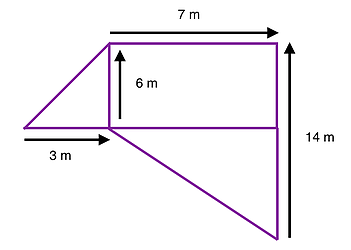
a) 87 meters squared
b) 83 meters squared
c) 85 meters squared
d) 79 meters squared
5) A car left Cambridge at 07:18 and arrived at Gatwick, travelling a distance of 180 miles at 11:06 am. What was the average speed in miles per hour (pick the closest answer)?
a) 43 mph
b) 45 mph
c) 49 mph
d) 47 mph
6) A 737 flies 930 miles in 75 minutes. How many miles does it fly in 4 hours 45 minutes assuming as constant speed?
a) 3534
b) 3548
c) 3368
d) 3552
7) If you travel 1248 miles, how much fuel will you need if you burn 4500 kgs per hour and are travelling at 720 mph?
a) 7800 kgs
b) 6800 kgs
c) 7200 kgs
d) 7400 kgs
8) An airline is selling tickets for its A380 service. The airline sells 40% of the seats and still has 420 seats remaining. How many seats were being sold originally?
a) 588
b) 672
c) 600
d) 700
9) The average of 20 numbers is zero. Of them, at the most, how many may be greater than zero?
a) 0
b) 1
c) 10
d) 19
10) What is 65% of 380?
a) 245
b) 247
c) 249
d) 251
11) What is 7 cubed?
a) 343
b) 347
c) 345
d) 349
12) X squared=289 What is X?
a) 13
b) 19
c) 17
d) 15
13) A man exchanges 368 pounds for dollars at an exchange rate of 1 pound=1:72 dollars. How many dollars does he get in return? (answer to the nearest dollar)
a) 626
b) 633
c) 619
d) 623
14) What is the value of X?
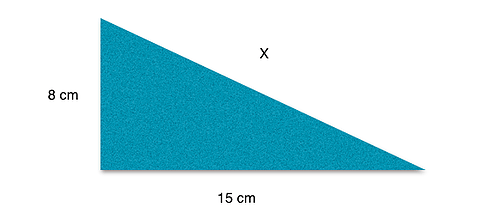
a) 14
b) 17
c) 19
d) 13
15) If an aircraft was cruising at an altitude of 39,000 ft and descended to an altitude 11,000 ft in 20 minutes, what was its average rate of descent?
a) 1250 fpm
b) 1600 fpm
c) 1650 fpm
d) 1400 fpm
16) How many minutes is 2 days 17 hours and 46 minutes?
a) 4246
b) 3946
c) 3928
d) 3958
17) If it’s 17:00 UTC and Dubai is UTC + 5 and 7 hours behind Sydney, what is the local time in Sydney?
a) 03:00
b) 15:00
c) 04:00
d) 05:00
18) If an aircraft departed an airfield and headed directly south for 16 miles and then turned onto a heading of 270 degrees for 12 minutes at an average speed of 80 miles per hour, how many miles is it (in a straight line) from its original destination?
a) 16
b) 23
c) 18
d) 26
19) How many nautical miles can an aircraft travel if it is carrying 2880 kgs of fuel and burns 240 kgs an hour averaging a speed of 375 knots?
a) 4,250 NM
b) 3,800 NM
c) 4,450 NM
d) 4,500 NM
20) Given that you had 25 minutes to answer 20 questions on this test paper, on average, how much time did you have per question?
a) 1m 20s
b) 1m 10s
c) 1m 15s
d) 1m 12s
END OF TEST
Numerical Reasoning Mental Arithmetic Examination Answers
1) a 2) b 3) c 4) d 5) d 6) a 7) a 8) d 9) a 10) b 11) a 12) c 13) b 14) b 15) d 16) b 17) c 18) b
19) d 20) c
Numerical Reasoning Pilot Practice Test 2
1) What is the missing number: 7, 10, 14, 19, …., 32
a) 25
b) 24
c) 26
d) 27
2) A First Officer earns £52,000 a year. If she gets a wage increase of 3%, what will her new wage be?
a) £53,240
b) £53,560
c) £53,760
d) £53,440
3) What is 17% of 1112 rounded to the nearest whole number?
a) 173
b) 183
c) 179
d) 189
4) What is the average of these 4 numbers: 87, 92, 74, 19
a) 68
b) 72
c) 60
d) 56
5) If an aircraft is travelling at 300 knots, how many miles will it travel in 3 hours and 40 minutes?
a) 1,120 NM
b) 1,260 NM
c) 990 NM
d) 1,100 NM
6) If a right handed triangle’s two shortest sides are both 17m each, what is the length of the longest side (to the nearest whole number)
a) 25m
b) 23m
c) 24m
d) 27m
7) What is 32 x 78 – 143 ?
a) 2375
b) 2373
c) 2353
d) 2355
8) What is the missing number?

a) 2
b) 1
c) 4
d) 3
9) What is 20% of 120 plus 33.33% of 99?
a) 57
b) 55
c) 53
d) 51
10) What is 1987 – 379?
a) 1718
b) 1708
c) 1798
d) 1608
Answers:
1) a
2) b – 52,000 x 0.03 = 1560 + 52,000 = £53,560
3) d
4) a – 87+92+74+19 / 4
5) d – 300 x 3 = 900. 60 minutes / 20 minutes = 3. 300/3 =100. 100 x 2 + 900 = 1100 NM
6) c – A squared + B squared = C squared
7) c
8) a – 24/36 is 2 thirds
9) a
10) d
Pilot Interview Preparation Coaching
Pilot Interview Preparation
Ensure you are thoroughly prepared for your airline interview with our professional interview coaching service. We’ll take you through the commonly asked interview questions (both technical and competency based example questions) in a mock assessment that is followed up with coaching and tutoring to help improve your performance.
We look at everything from body language, to the use of keywords and demonstrating essential competencies.
We can conduct the interview sessions via Zoom, or we can arrange a mutually agreed location. The practice interviews and the subsequent tutoring is carried out as a 2 on 1 session, ensuring that you get the full attention of both a professional airline pilot and Human Resources representative.
A typical session is three hours (although it can be tailored to your requirements). If you are practicing for a particular airline, we can tailor the interview for that specific airline.
Technical ATPL Practice Tests
Brush up on your ATPL theory for your upcoming airline or flight school assessment.
Once you’ve completed the 14 ATPL theoretical examinations, it can be a challenge to retain all the information you’ve learnt. Many airlines assess the technical knowledge of prospective employees through conducting technical tests, either as a multiple choice examination, or through a technical interview.
At Flightdeckfriend.com we have a number of practice technical examinations to help you prepare for an upcoming assessment or interview. We have split the examinations into the different ATPL subject areas:
Verbal Reasoning Pilot Practice Test
Practice and enhance your verbal reasoning and English language skills for your upcoming flight crew or flight school selection.
Whilst we provide a free Verbal Reasoning practice aptitude test, if you are looking for some more thorough preparation for your upcoming pilot assessment, with over 2,000 Verbal Reasoning practice questions, we’d highly recommend you visit our JobPrep partners, who offer pilot specific packages.
Verbal Reasoning Practice Tests For Airline Pilots
A verbal reasoning test is designed to test your understanding and verbal comprehension skills. It is also, indirectly, a test of your English language skills as they can contain obscure words that many people whose first language is not English, would not be familiar with. Airlines frequently use verbal reasoning tests as part of their initial selection process. It is something you can practice in order to improve your performance.
A verbal reasoning test consists of a paragraph of text. You will be instructed to read the text followed by studying a series of statements. You must determine whether the statements are either true, false or you are unable to determine based on the information contained in the paragraph of text. The tests are typically completed under pressurised time constraints. It is common that you will not be able to answer the questions in the allotted time. Whilst the rules can vary from test to test, be careful when rushing through the paper in order to answer all the questions, as they are often negatively marked. You are probably better to work quickly but accurately, rather than too fast and making mistakes, even if this means you will not be able to answer all the questions.
You should not use any previous knowledge you have on any subject to answer the questions, you must only use the information contained in the text. For example, if in the paragraph of text is saying that “the sky is green”, and the preceding statement says “the sky is blue”, you should confirm that the “the sky is blue” statement is false as it disagrees with what is stated in the text.
We would suggest you tackle the examination by reading the statement before you read the text. This will allow you to understand what information you are looking for, and you can answer the question when you have ascertained the information. If you read the entire paragraph, you might spend unnecessary time reading all of the text, when you could have stopped after the first few sentences.
Verbal Reasoning Free Practice Test
The text in the paragraph below is fictional. You should read the paragraph and then look at statements 1 – 7 below. You must determine, using purely the information contained within the text, whether each statement is either:
A) Definitely true
B) Definitely untrue
C) Can’t Tell
Each answer should be marked with the answer A, B or C. You can find the answers, with an explanation to each one at the bottom of the page.
Example
“Globe Airways, the world’s sixth largest carrier by fleet size, has recently announced that it will launch a service from London to Sydney in two months time. Its commercial department’s research has concluded that it will likely become profitable between in it’s second year of operation, when they anticipate carrying twice as many passengers than on its London to Singapore route. The London to Singapore route current currently carries 750,000 passengers a year. They anticipate a 64% load factor in year one, rising to 77% in year two. The route will be operated 6 days a week by a Boeing 747-400 aircraft with the possibility of transferring the service to the Airbus 380 should extra capacity be required.”
Globe Airways currently operates a London to Singapore route.
a – Definitely True. The text refers to the airline’s current London to Singapore route.
Globe Airways is the sixth biggest carrier in the world, based on the number of passengers it carries.
c – Can’t Tell. It says Globe Airways is the sixth biggest carrier in terms of fleet size which is not a reflection of passenger numbers.
Globe Airways anticipates carrying over one million passengers by year two on it’s London to Sydney route..
a – Definitely True. In year two, the airline says it will carry twice as many passengers as on it’s London to Singapore route, which currently carries 750,000 passengers. 2 x 750,000 equals 1.5 million, therefore it will carry more than 1 million passengers.
If Globe Air passengers wish to fly from London to Sydney at the moment, they must transfer at Singapore.
c – Can’t Tell. There is no reference to current arrangements for passengers wishing to travel to Singapore.
Globe Air will not operate the new London to Sydney route on Sundays and Tuesdays.
b – Definitely Untrue. It says the airline will fly the route six days a week. Therefore, saying it will not fly on two days of the week is incorrect.
Year three will see a load factor in excess of 80% on the London to Sydney route.
c – Can’t Tell. There is a reference to load factors in year one and two but not year three.
Globe Airways commercial department looked at the viability of the London to Sydney route before launching it.
a – Definitely True. The commercial department is stated to have researched the route beforehand. This implies they looked at the commercial viability.
Cadet Pilot Interview Questions
Cadet Pilot Interview Question Database
Our Cadet Pilot Interview Question Database has helped hundreds of aspiring pilots successfully pass flight training school and mentored airline pilot cadet program interviews. With intense competition for places on airline pilot cadet programs, it’s essential that you are thoroughly prepared for your selection day. You need to put in hours of work beforehand, to ensure that you stand out from the rest.
Please note that our Cadet Pilot Interview Question Database is the same document as our Pilot Interview Question Database. The document is suitable for interview preparation for all levels of pilots, whether prospective or current. Some questions will clearly be more relevant than others, but it is an exceptional tool to help you prepare for your cadet pilot interview.
Why Choose Our Cadet Pilot Interview Database?
One of the most important yet misunderstood elements which is assessed at the interview is competency. You can expect a multitude of HR/Competency and Motivational questions as well as a basic level of technical questioning. If you’ve not had the opportunity to practice these questions beforehand, it can be very difficult to think of an answer on the spot and under pressure.
Our Cadet Pilot Interview Question Bank has been built using questions from cadet programs and integrated flight training organisations across the globe. It consists of over 350 questions including both competency and technical based. It has been created by recruiters who have specifically conducted Cadet Pilot interviews.
This database also contains questions similar to those asked in the selection process for integrated flight training courses such as:
- FTEJerez
- L3 Aviation Academy
- CAE Oxford Aviation
- Airways Aviation
- FTA
Which Cadet Programs?
The interview questions are also representative of those used at MPL & mentored cadet pilot program interviews at airlines such as:
- easyJet (Generation easyJet)
- Emirates Cadet Program
- Wizz Air Cadet Program
- Aer Lingus MPL Program
- Air Asia Cadet Program
- Cathay Pacific Second Officer Program
- TUI Cadet Program
- Qatar Airways Cadet Program
Cadet Pilot Interview Question Examples
Examples of the types of interview questions are as follows (HR/Competency/Motivational & Technical):
- Give me an example of when you have demonstrated strong leadership skills?
- When have you worked well within a team?
- How do you deal with conflict?
- Tell us about a time when you’ve underachieved?
- How does an aircraft fly?
- How many planes do easyJet have?
- How do jet engines work?
- What engines do we have on our B737 fleet?
All of these questions come with suggested answers.
Pilot Interview Database Format
The Cadet Pilot Interview Question Database is a PDF document split up into three specific sections:
- General interview and assessment day advice and guidance
- Competency & Motivational Interview Example Questions and Answers
- Airline / Aviation / Pilot Technical Questions with Answers
ENHANCED PACKAGE – WITH SUGGESTED ANSWERS TO 350+ COMPETENCY AND TECHNICAL QUESTIONS
£39.99
What’s included in our Cadet Pilot Interview Question Database?
- Updated January 2022
- Emailed to you shortly after purchase
- 350+ interview questions and answers
- 114-page document consisting of over 32,700 words
For any further queries, please contact us via email at: [email protected]
